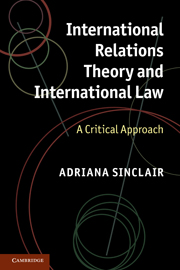Book contents
- Frontmatter
- Contents
- Acknowledgements
- Introduction
- 1 The theoretical foundations of constructivism and its treatment of law
- 2 Challenging the common sense idea of law
- 3 Introducing critical jurisprudence
- 4 Brown, desegregation and racism in America
- 5 Constructing rape
- 6 Law and normative backsliding
- Conclusion
- Bibliography
- Index
4 - Brown, desegregation and racism in America
the myth and reality of law’s ability to solve complex social problems
Published online by Cambridge University Press: 05 June 2012
- Frontmatter
- Contents
- Acknowledgements
- Introduction
- 1 The theoretical foundations of constructivism and its treatment of law
- 2 Challenging the common sense idea of law
- 3 Introducing critical jurisprudence
- 4 Brown, desegregation and racism in America
- 5 Constructing rape
- 6 Law and normative backsliding
- Conclusion
- Bibliography
- Index
Summary
Introduction
On 17 May 1954, the Supreme Court of the United States handed down its landmark decision Brown v. Board of Education of Topeka, Kansas. The case was actually a collection of five cases from Delaware, Kansas, South Carolina, Virginia and the District of Columbia. They were heard together because each dealt with the constitutionality of racially segregated schools, with the exception of the District of Columbia case which raised the issue of the federal government’s duty to respect racial equality. The decision in this case, in favour of Brown, was handed down on the same day. A third opinion forms what is now known as Brown: Brown II, handed down on 31 May 1955, it was the Supreme Court’s ruling on remedy.
This chapter uses the landmark decision of Brown v. Board of Education as a means of exploring the myth and reality of what law can achieve and its ability to solve complex social problems like racism. Two questions animate this chapter. First, how should we understand Brown? Was it a radical and counter-majoritarian decision by a brave and bold Supreme Court? Was it the result of a clever litigation strategy by the National Association for the Advancement of Colored People (NAACP)? Was it justice finally achieved? Or was it simply a rational calculation of interests on the part of the North, the President and the Supreme Court? And did Brown itself end segregation? Secondly, however we choose to see Brown, what does this mean for our understanding of law? Does Brown prove or disprove the common sense idea of law outlined in chapter 2? This chapter will start by exploring the popular understanding – the ‘story’ of Brown – as the decision that ended segregation. Law, in this understanding, is the path to justice and as such, we can see clear links with the common sense idea of law. In fact, such an understanding of Brown is underpinned by the common sense idea of law. But when we contrast this with Bell’s alternate explanation of Brown, we learn something quite different about the common sense idea of law. Law is no longer the tool for ending segregation, but the edifice that held it in place for so long.
- Type
- Chapter
- Information
- International Relations Theory and International LawA Critical Approach, pp. 87 - 109Publisher: Cambridge University PressPrint publication year: 2010



